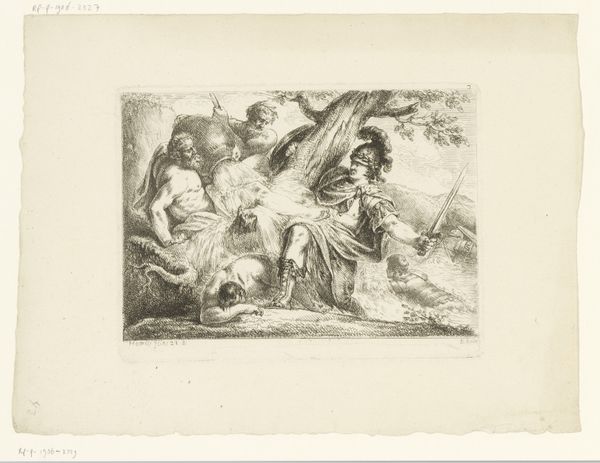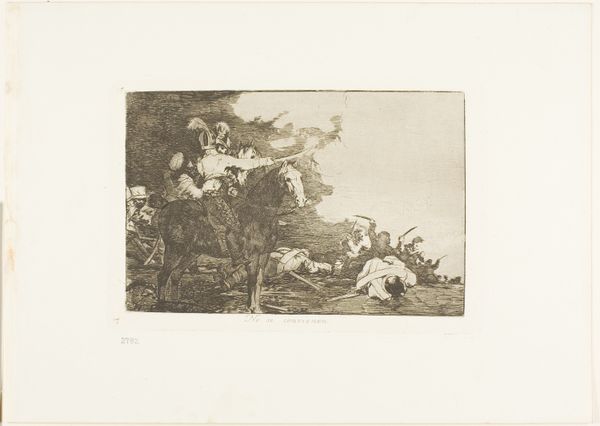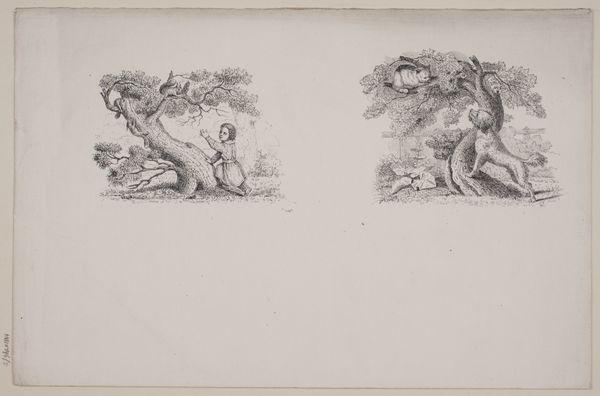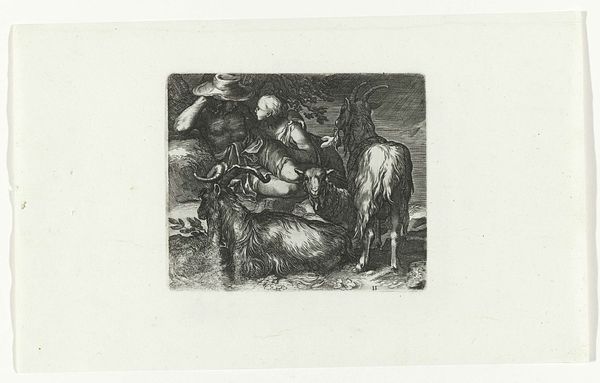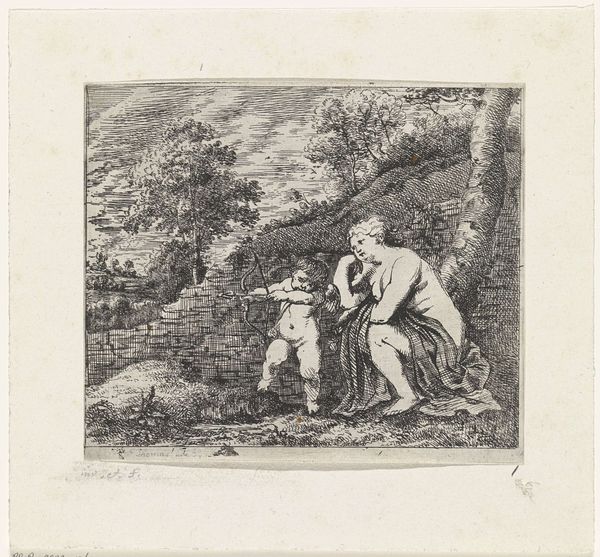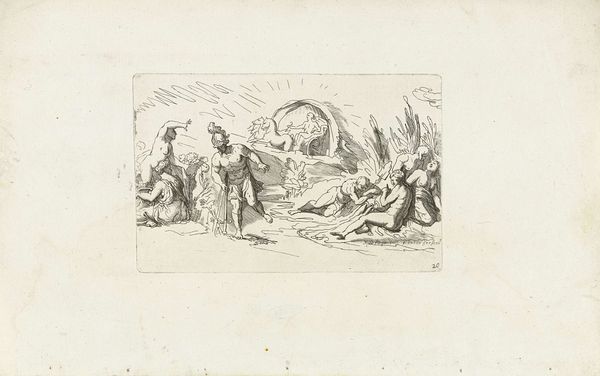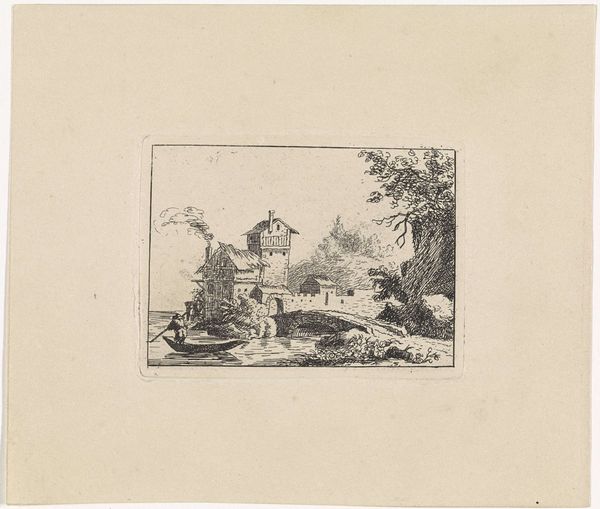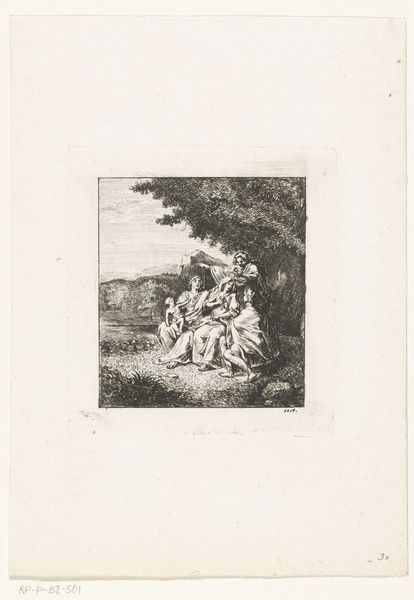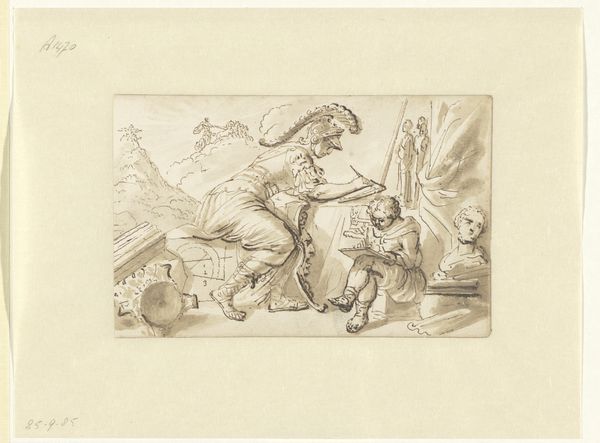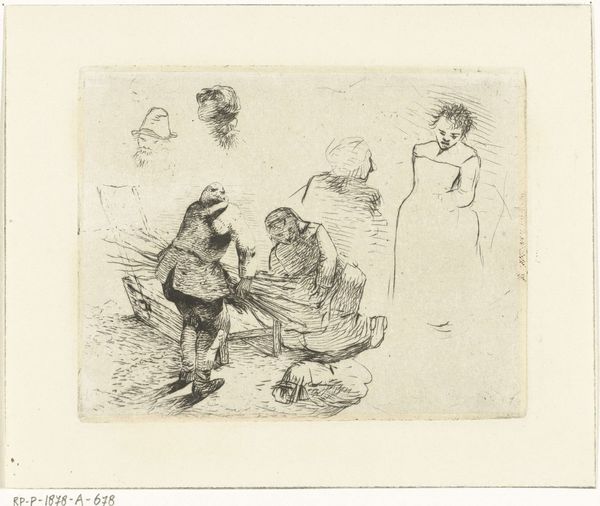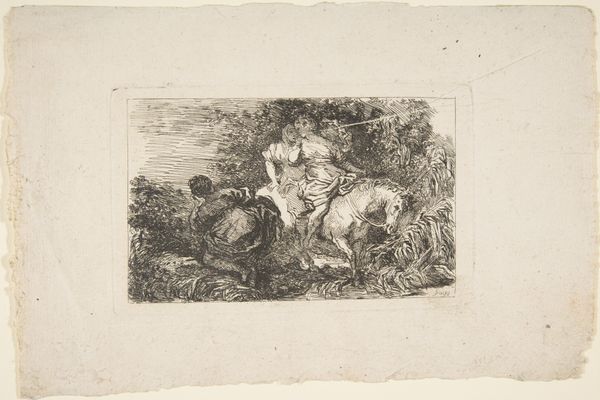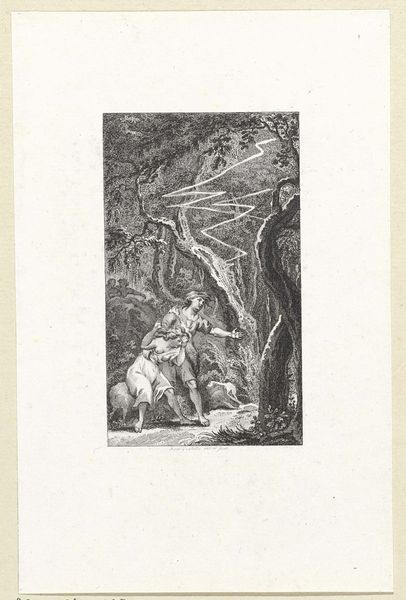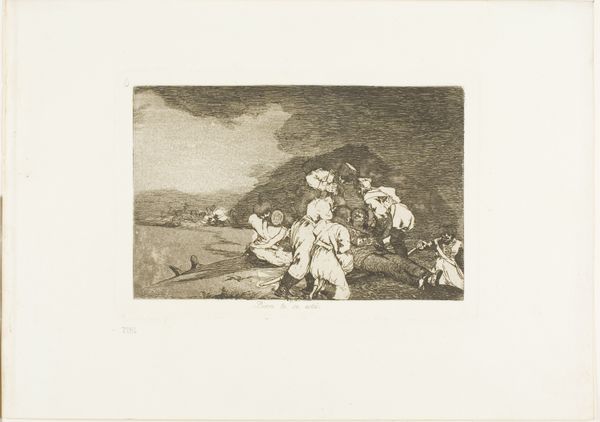
drawing, ink
#
drawing
#
narrative-art
#
baroque
#
landscape
#
figuration
#
ink
#
line
#
genre-painting
#
nude
Dimensions: height 99 mm, width 162 mm
Copyright: Rijks Museum: Open Domain
This etching, “Resting Bacchantes,” was made by Franz Ertinger in the 17th century using the intaglio printmaking technique. A metal plate, most likely copper, would have been coated with a waxy, acid-resistant substance called the etching ground, upon which the artist would draw with a sharp needle, exposing the metal underneath. The plate is then submerged in acid, which bites into the exposed lines, creating recessed marks. The plate is then inked, and wiped clean, leaving ink only in the etched lines. When pressed against paper, the ink transfers, producing a print with fine, raised lines. The material qualities are evident in the delicate nature of the lines, creating a sense of depth and atmosphere. What’s interesting here is that the printmaking process allowed for the mass production and distribution of images. This had a democratizing effect, making art accessible to a wider audience beyond the elite. In effect, Ertinger engaged in an early form of artistic dissemination, blurring the lines between fine art and a more accessible, reproducible medium.
Comments
No comments
Be the first to comment and join the conversation on the ultimate creative platform.
